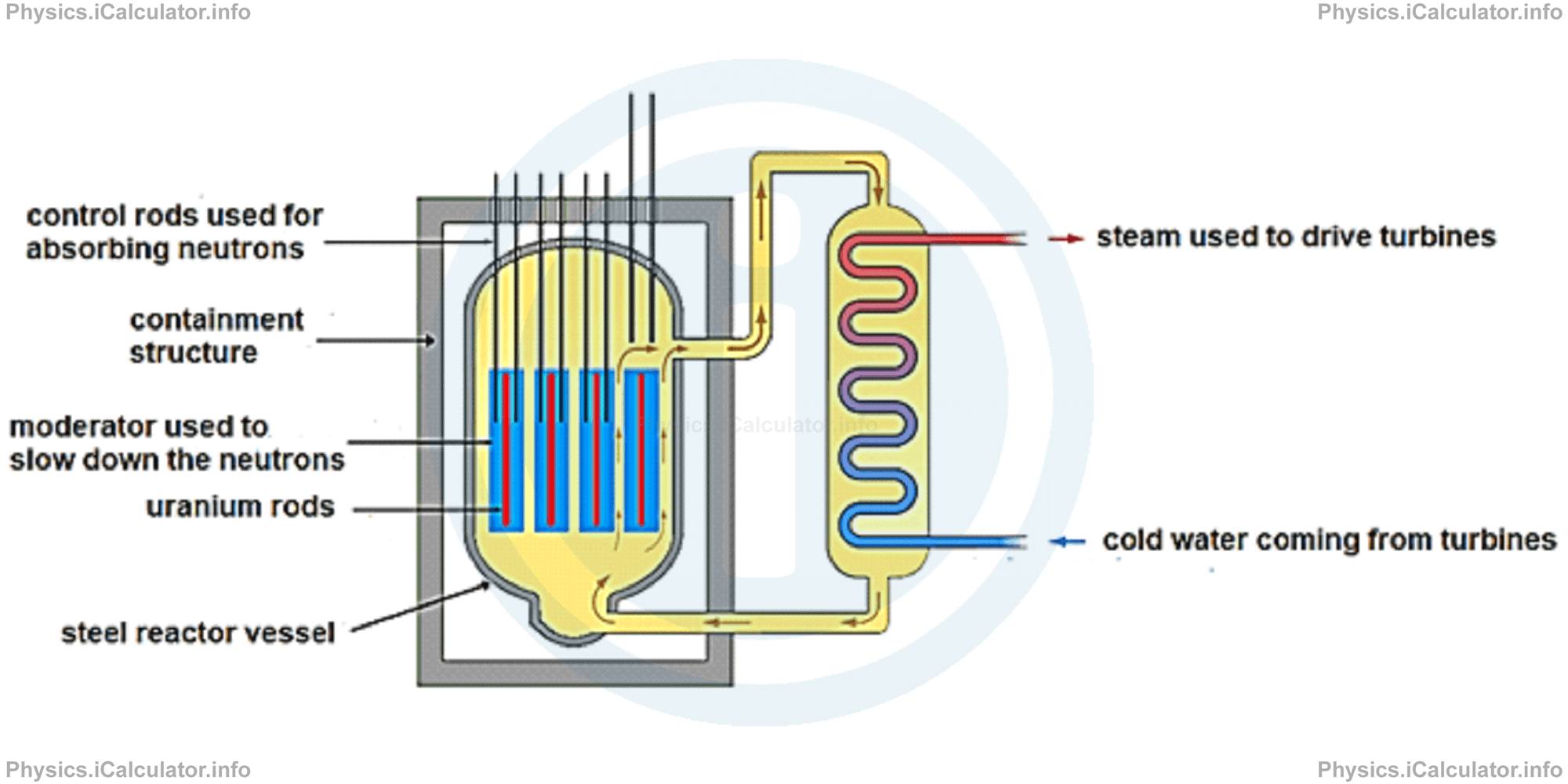Menu
Physics Lesson 20.4.7 - Nuclear Power Plants and Energy Production
Please provide a rating, it takes seconds and helps us to keep this resource free for all to use
Welcome to our Physics lesson on Nuclear Power Plants and Energy Production, this is the seventh lesson of our suite of physics lessons covering the topic of Nuclear Reactions, you can find links to the other lessons within this tutorial and access additional physics learning resources below this lesson.
Nuclear Power Plants and Energy Production
The main mechanism of nuclear power plants is nuclear reactor, formerly known as an atomic pile, which is a device used to initiate and control a fission nuclear chain reaction or nuclear fusion reactions.
A fission nuclear reactor consists on a fissile nuclear material enclosed within a protective (and insulating) case and equipped with mechanisms that regulate the fission rate as well as a heat exchange mechanism to remove the excessive heat produced during the operating process. The nuclear material used in such reactors is either uranium or plutonium whose percentage of fissile material has been increased artificially to ensure a higher efficiency. In this case, we say that we the nuclear material has experienced an enrichment process. For example, the percentage of enriched uranium (U-235) isotopes which make only 0.7% of natural uranium (U-238) is increased artificially to ensure a better fission process, as U-235 is more fissile than U-238.
Giving that the neutrons obtained through fission process are fast (they have a high kinetic energy), we have two options to decrease the risk for anomalies in the process:
- Relying on the low fissile ability of fast neutrons in order to produce only a small number of neutrons (in fast reactors)
- Making them slower by using a moderator to increase the probability of neutrons capture (in thermal reactors).

In thermal reactors, we must add substances that slow down quickly the neutrons produced during fission. Low atomic number elements are perfect for this goal. Some of these materials include graphite, beryllium, heavy water (H3O), etc. They either surround or mix with the fissile material. Thermal energy produced during this process heats some (uncontaminated) water producing steam, which is then used to rotate any turbine after flowing very fast through narrow tubes in order to generate electricity.
You have reached the end of Physics lesson 20.4.7 Nuclear Power Plants and Energy Production. There are 11 lessons in this physics tutorial covering Nuclear Reactions, you can access all the lessons from this tutorial below.
More Nuclear Reactions Lessons and Learning Resources
Whats next?
Enjoy the "Nuclear Power Plants and Energy Production" physics lesson? People who liked the "Nuclear Reactions lesson found the following resources useful:
- Power Plants Feedback. Helps other - Leave a rating for this power plants (see below)
- Nuclear Physics Physics tutorial: Nuclear Reactions. Read the Nuclear Reactions physics tutorial and build your physics knowledge of Nuclear Physics
- Nuclear Physics Revision Notes: Nuclear Reactions. Print the notes so you can revise the key points covered in the physics tutorial for Nuclear Reactions
- Nuclear Physics Practice Questions: Nuclear Reactions. Test and improve your knowledge of Nuclear Reactions with example questins and answers
- Check your calculations for Nuclear Physics questions with our excellent Nuclear Physics calculators which contain full equations and calculations clearly displayed line by line. See the Nuclear Physics Calculators by iCalculator™ below.
- Continuing learning nuclear physics - read our next physics tutorial: Atomic Nucleus and Its Structural Properties
Help others Learning Physics just like you
Please provide a rating, it takes seconds and helps us to keep this resource free for all to use
We hope you found this Physics lesson "Nuclear Reactions" useful. If you did it would be great if you could spare the time to rate this physics lesson (simply click on the number of stars that match your assessment of this physics learning aide) and/or share on social media, this helps us identify popular tutorials and calculators and expand our free learning resources to support our users around the world have free access to expand their knowledge of physics and other disciplines.